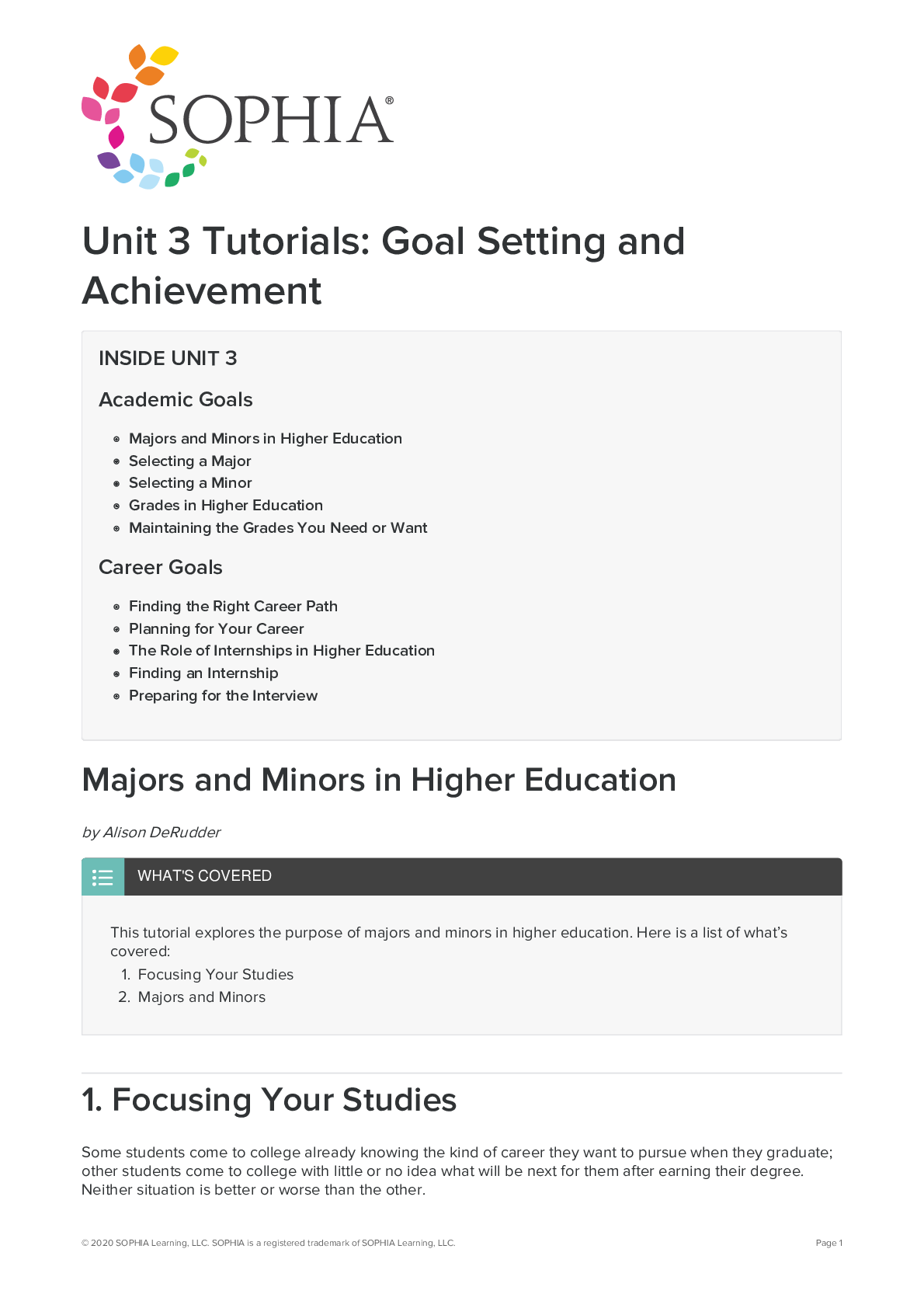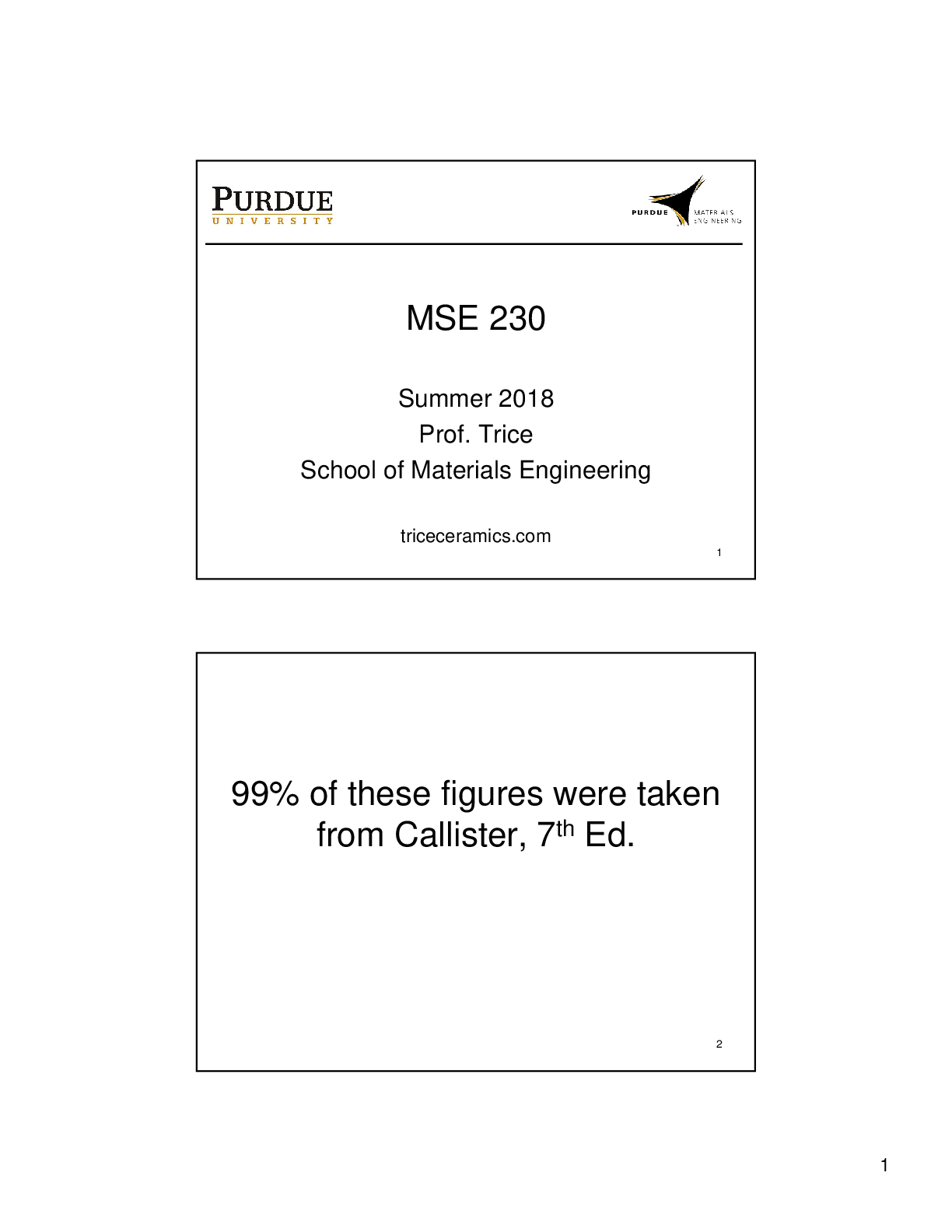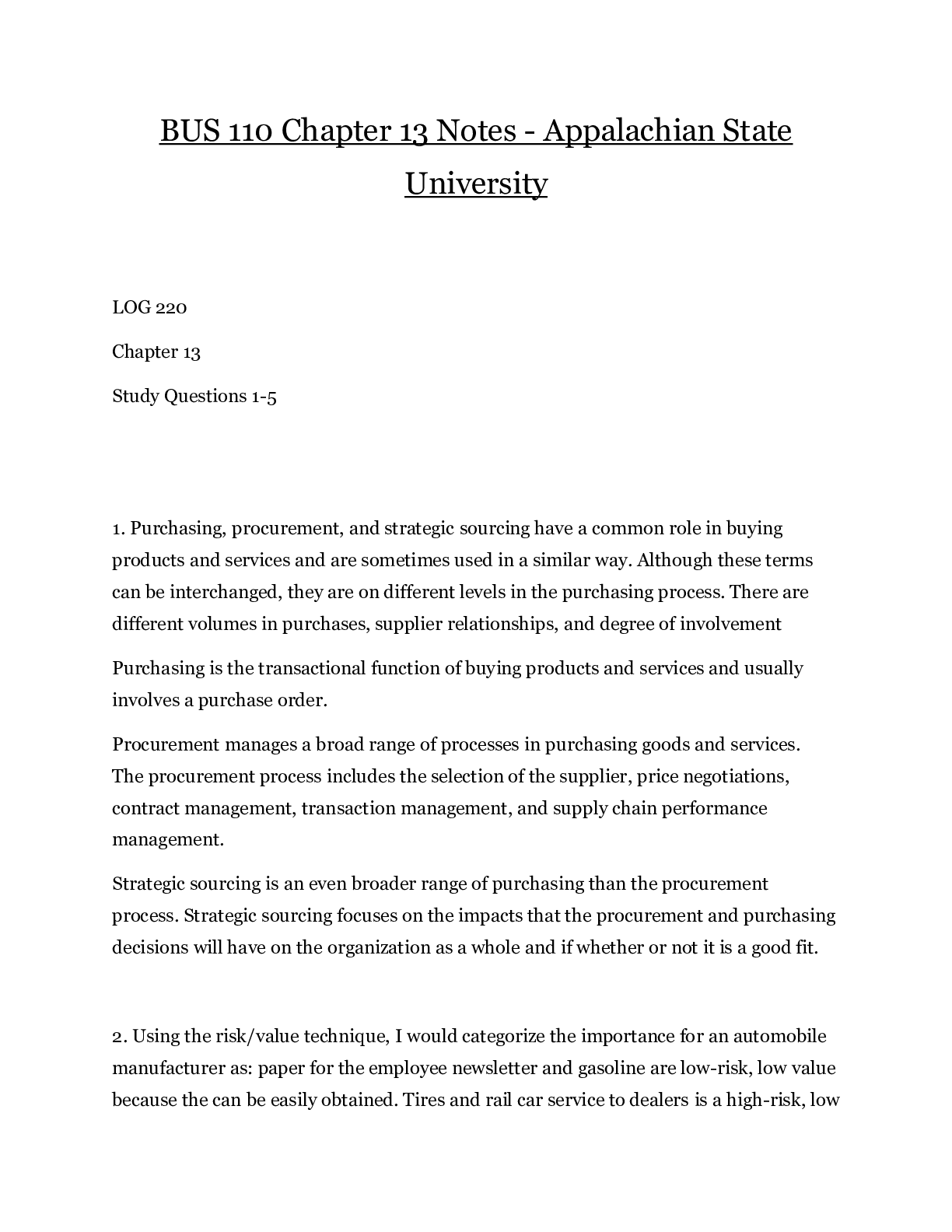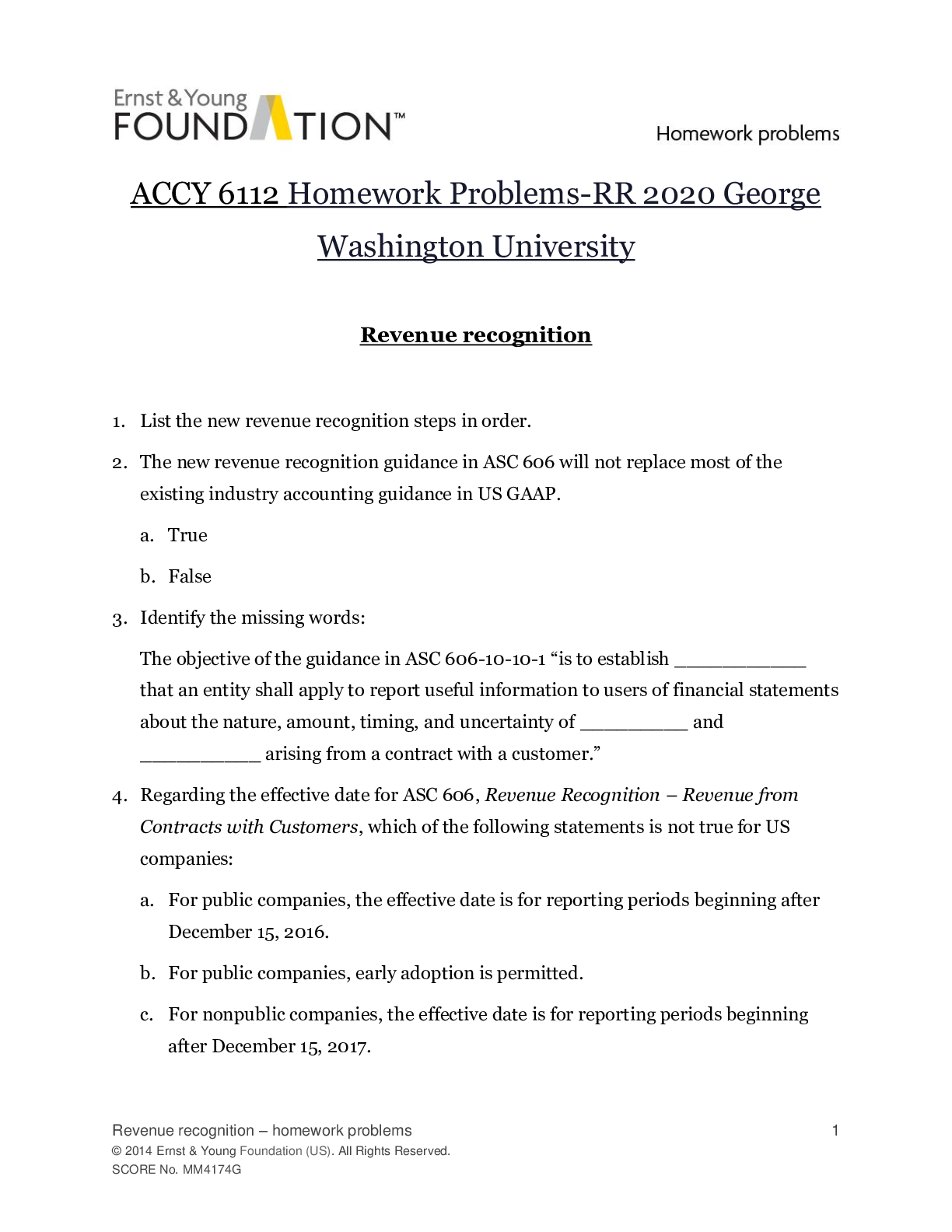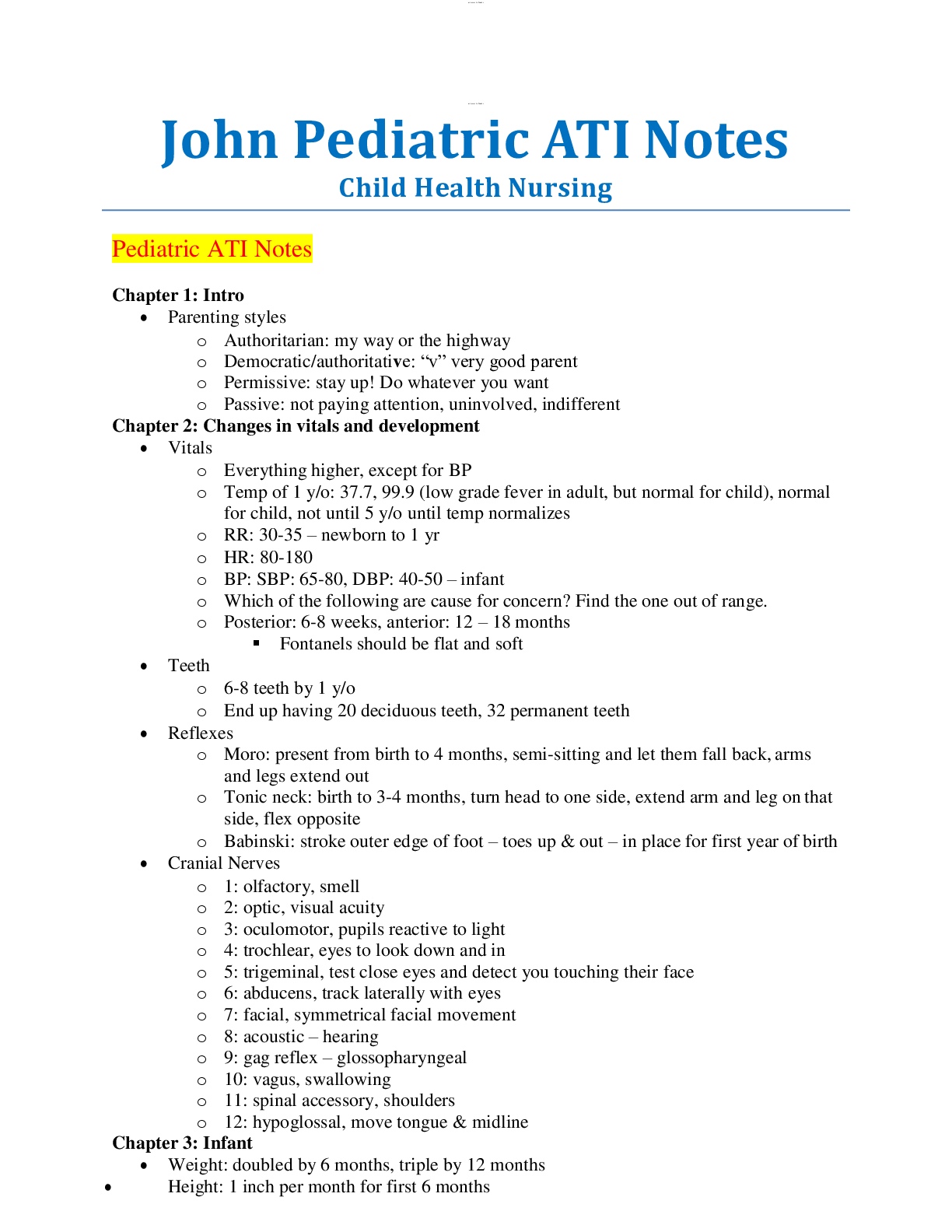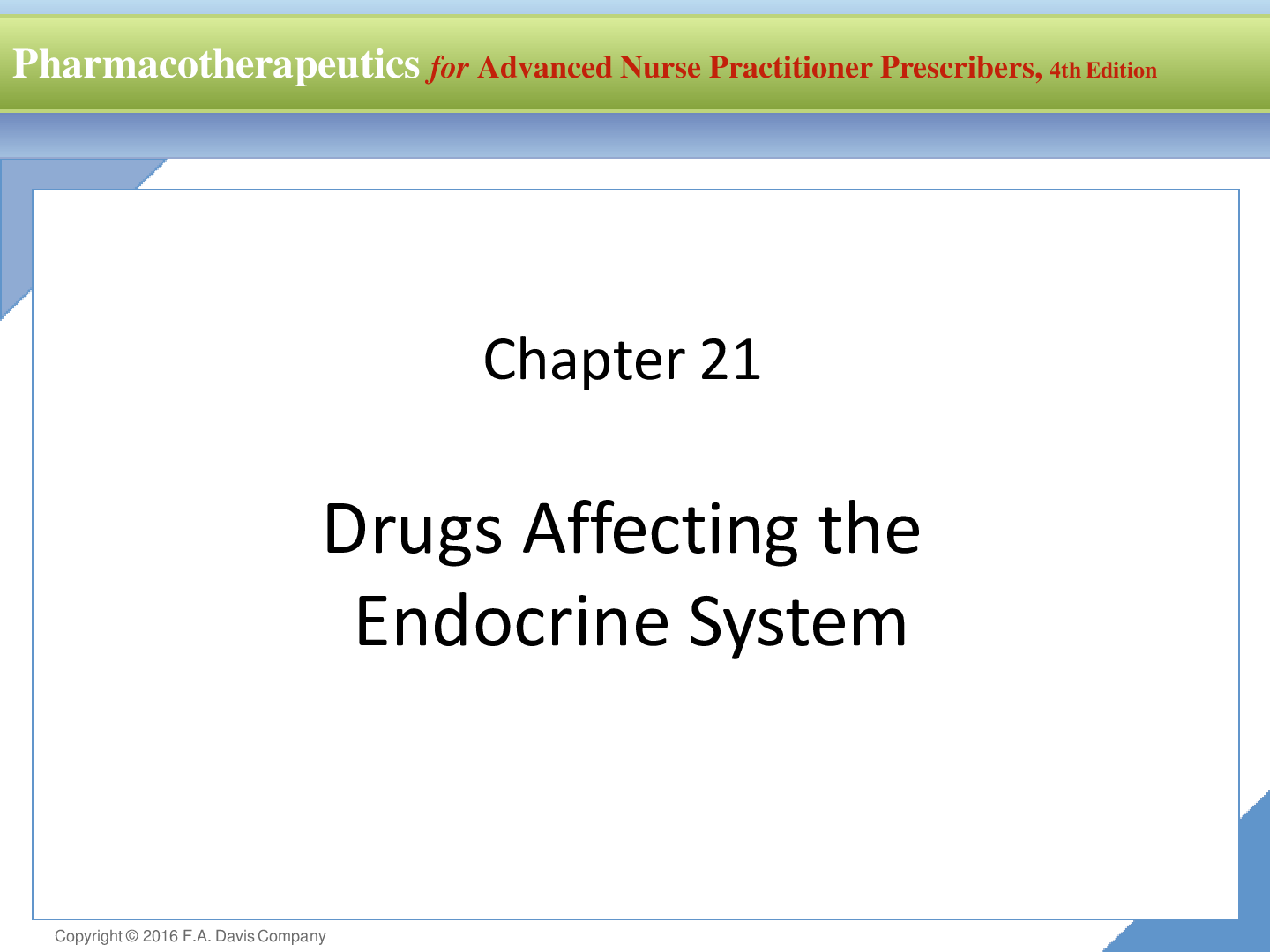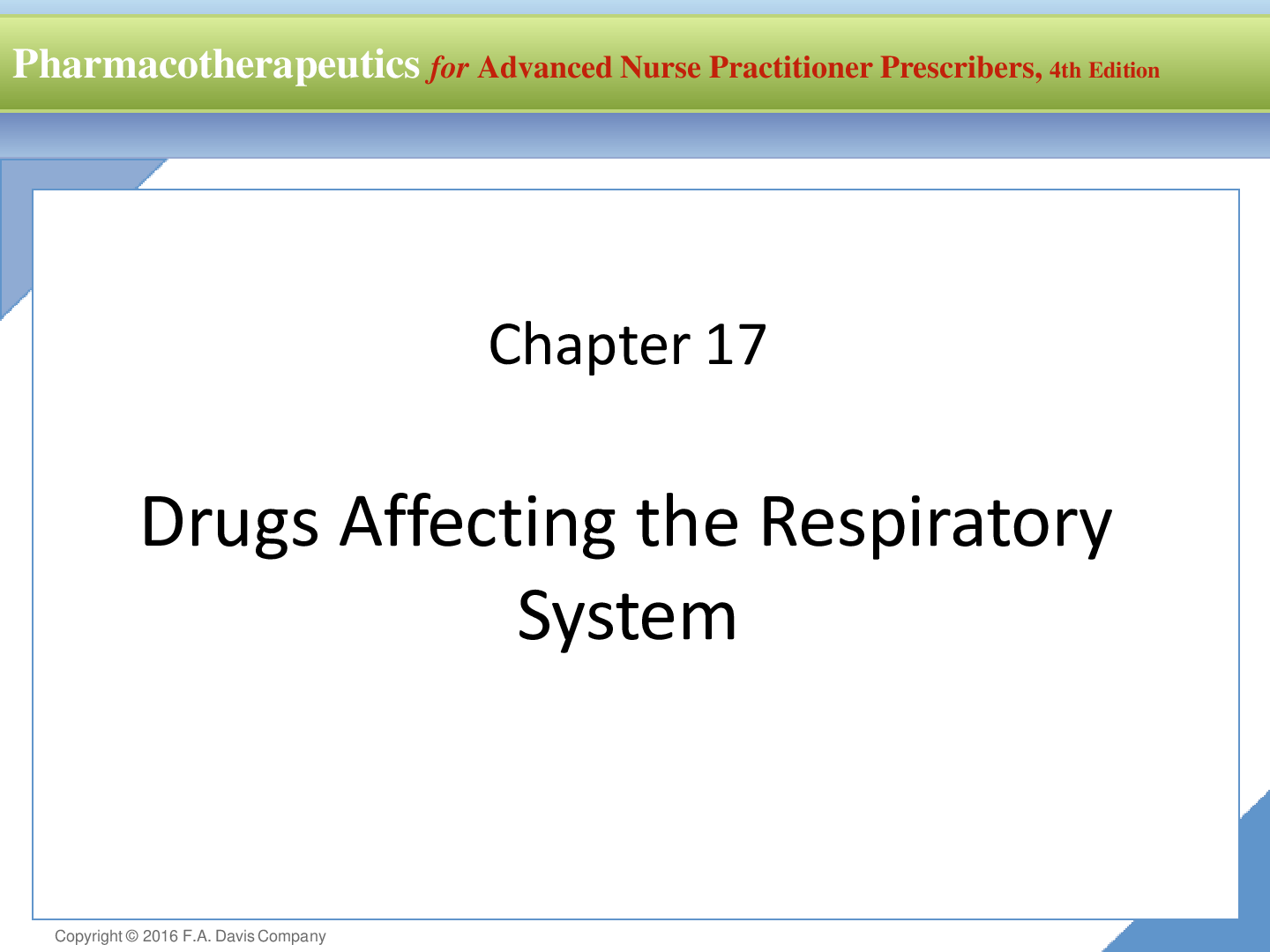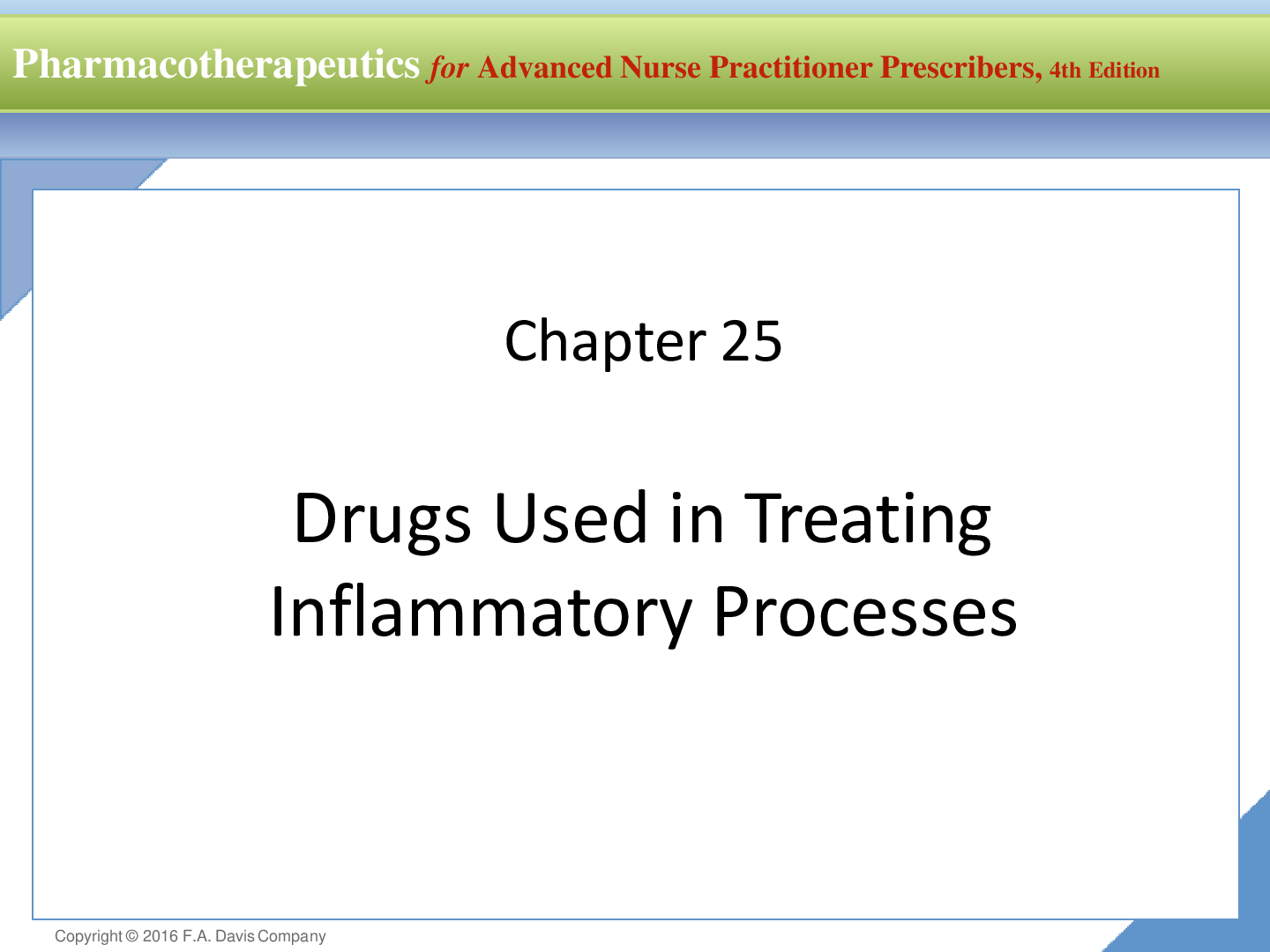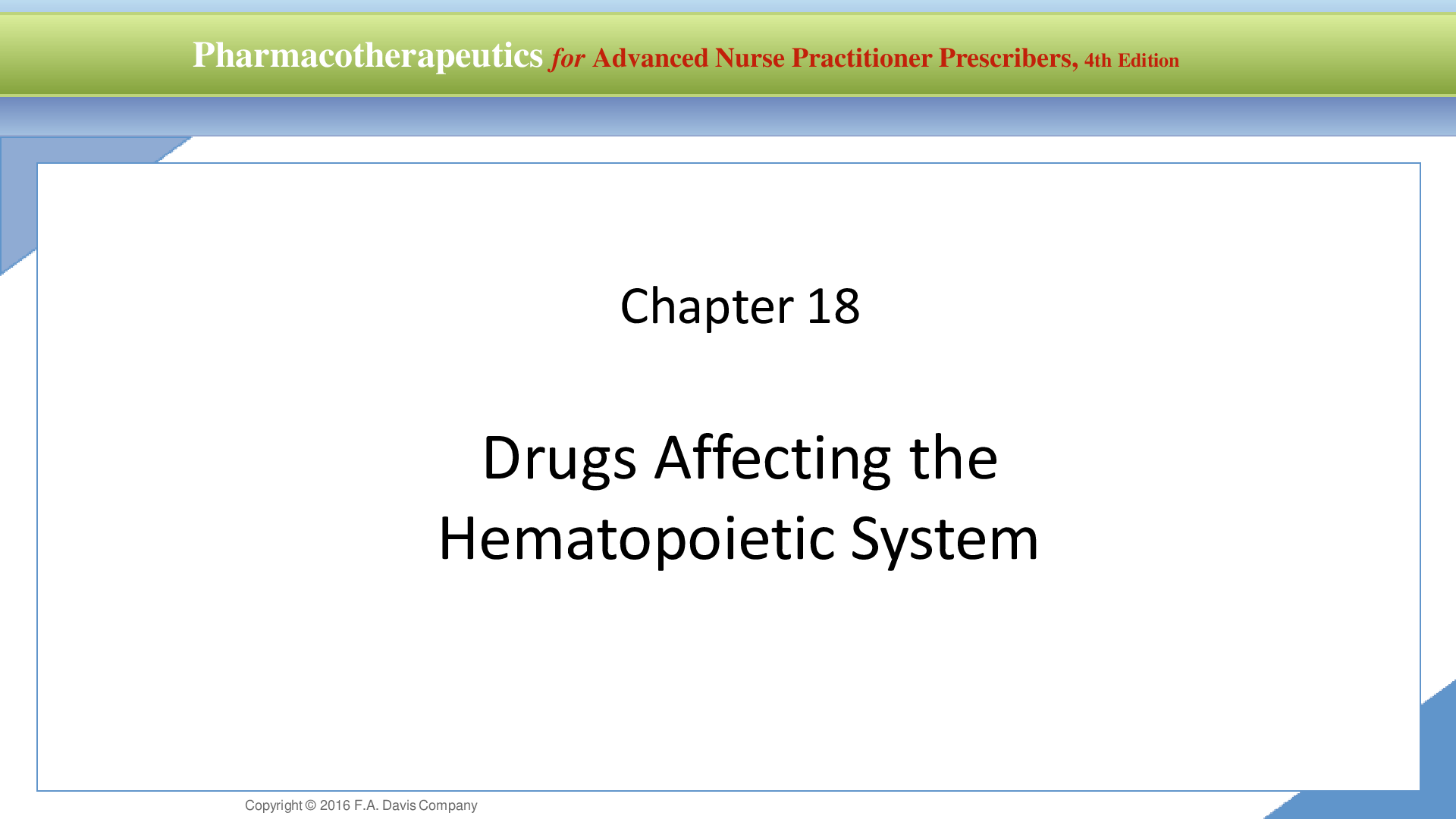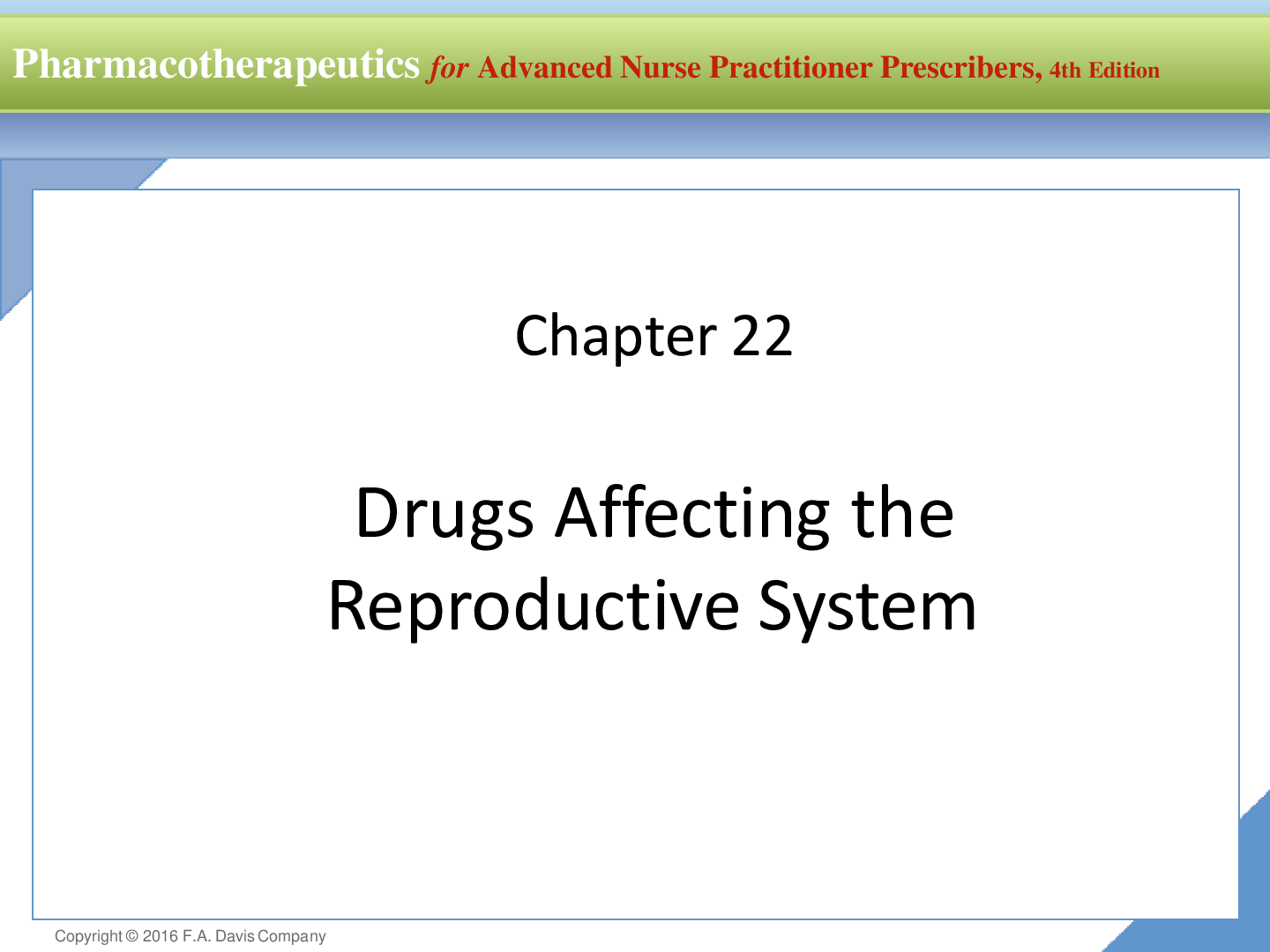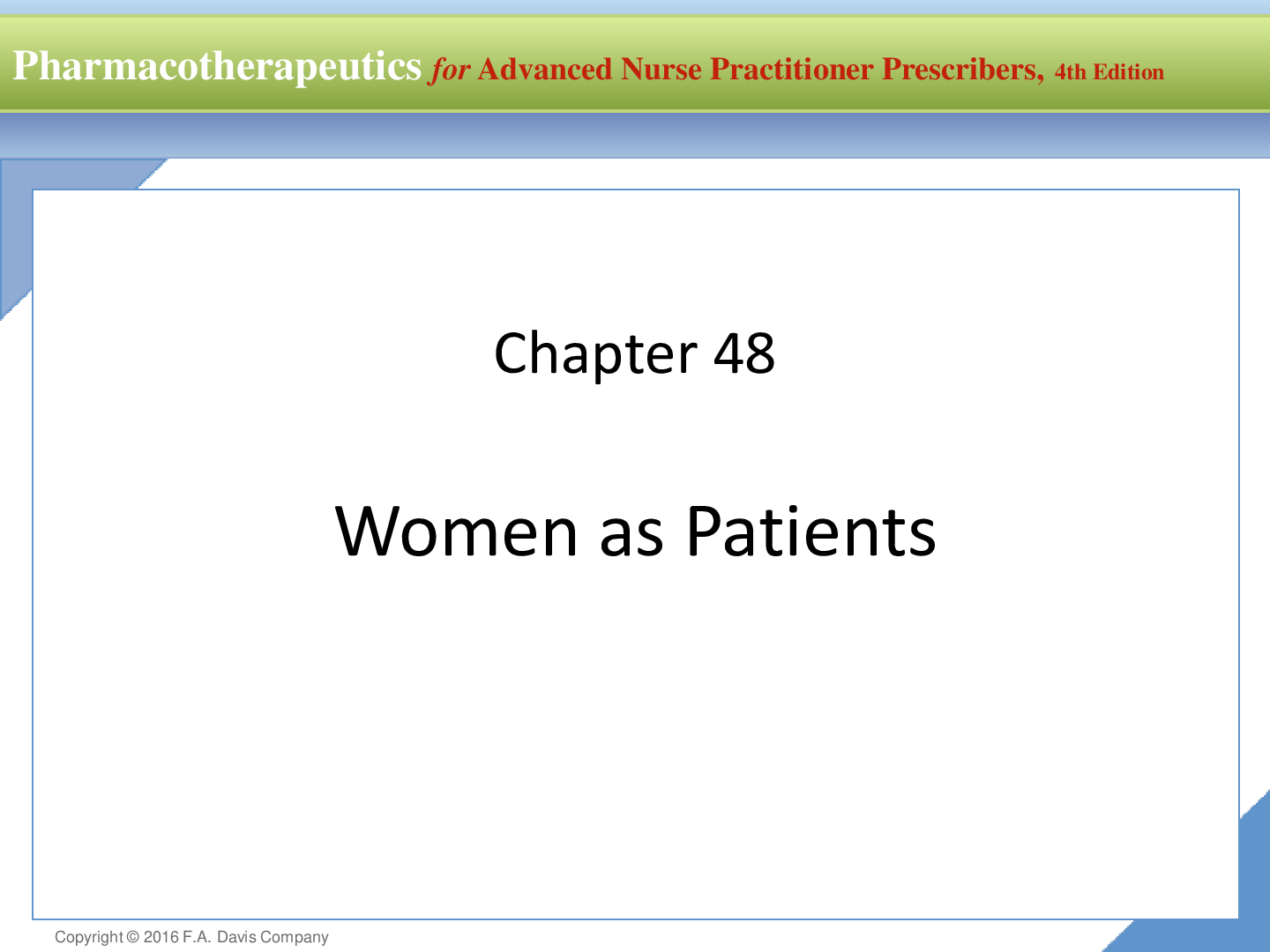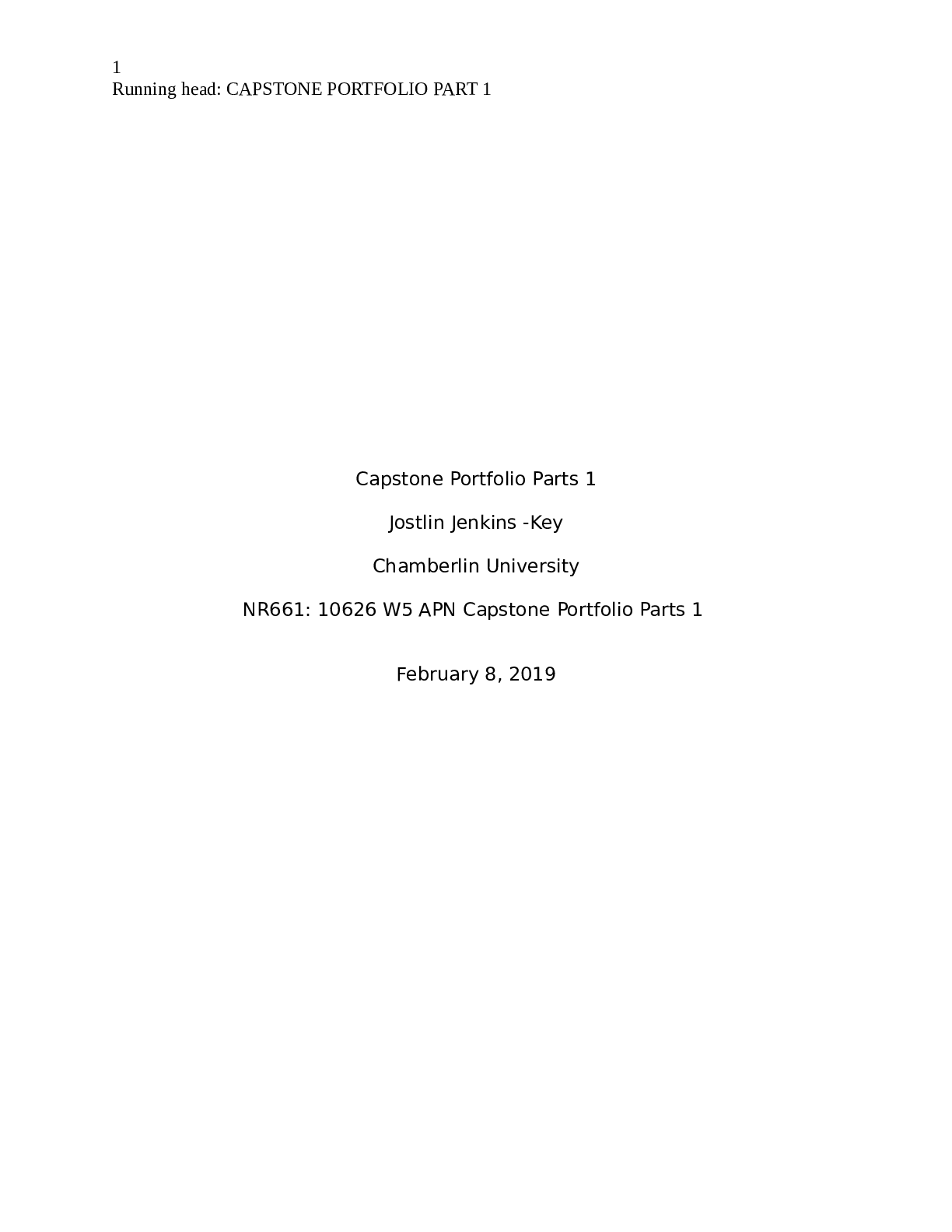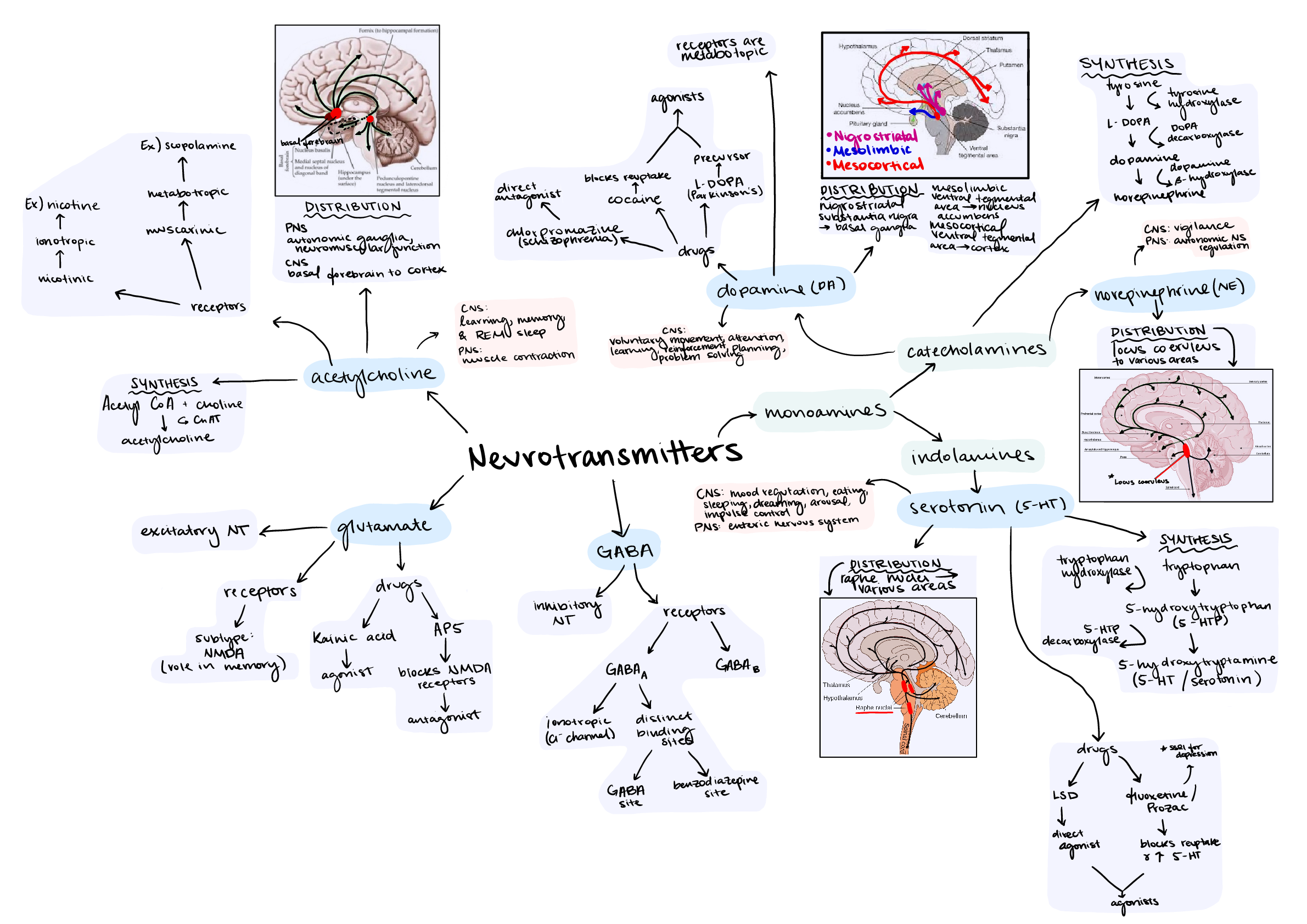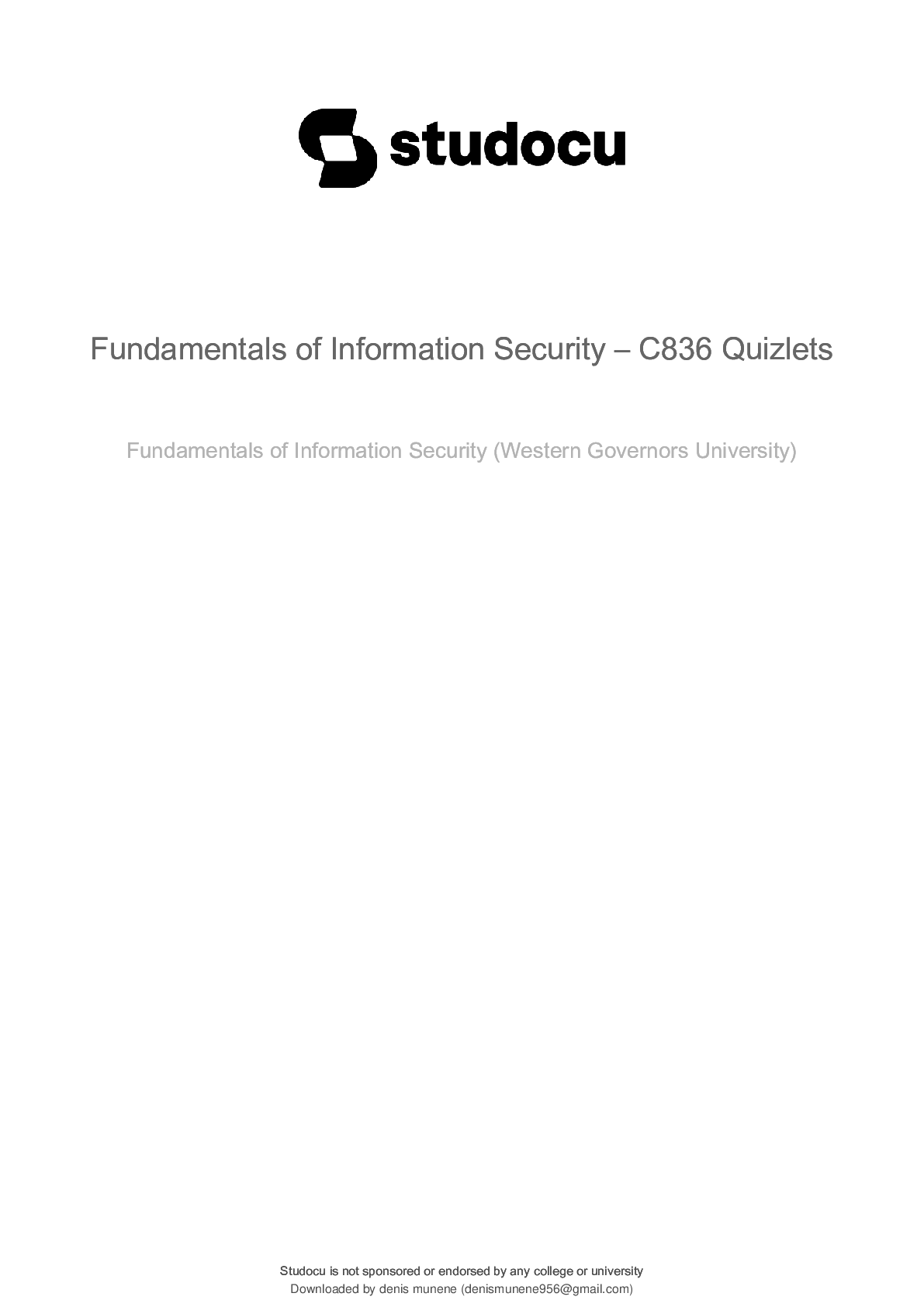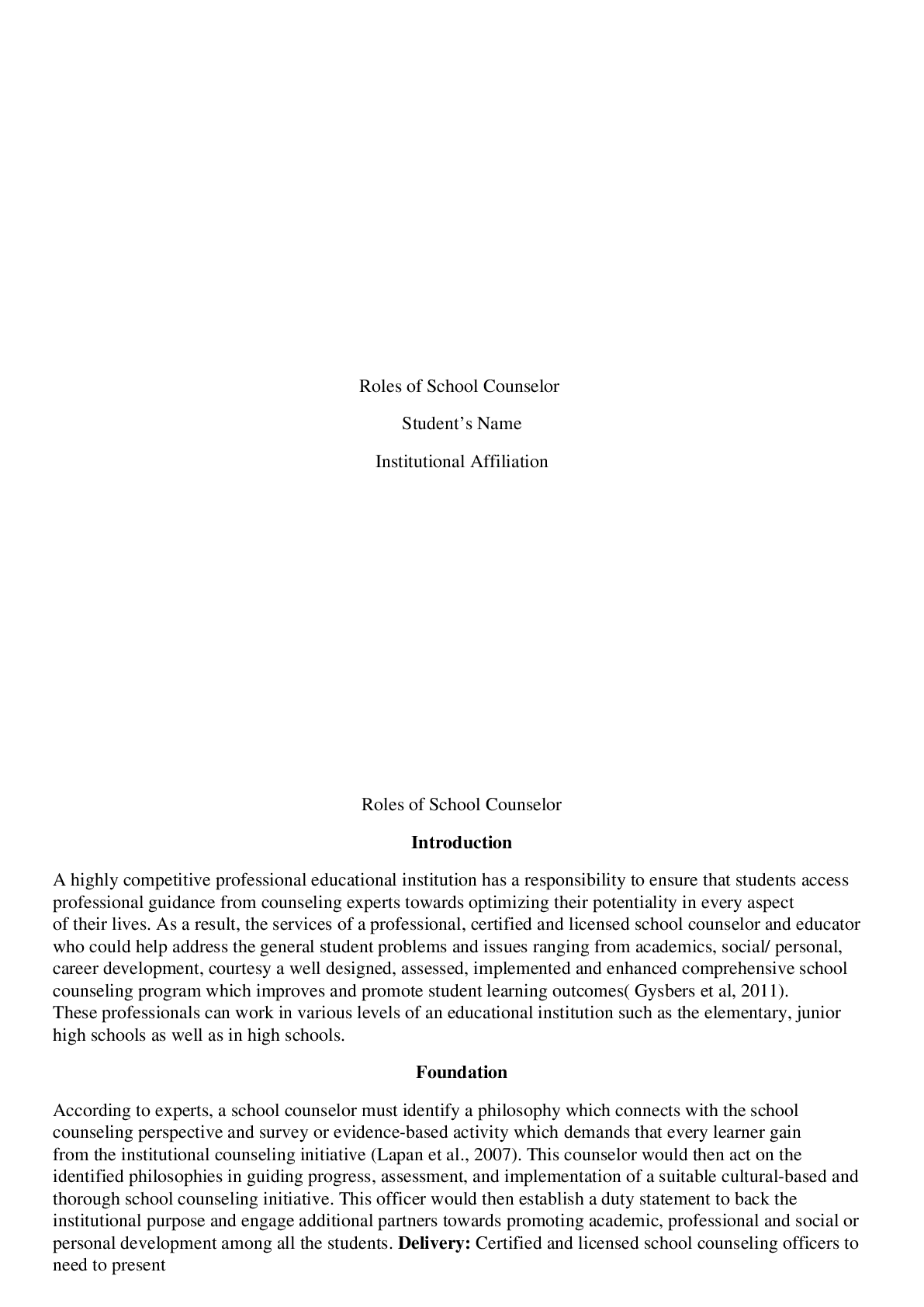Pharmacology > Class Notes > NGR 6172 Pharmacology Notes {55 chapters} | Pharmacology and Pharmacotherapeutics in Advanced Nursi (All)
NGR 6172 Pharmacology Notes {55 chapters} | Pharmacology and Pharmacotherapeutics in Advanced Nursing Practice
Document Content and Description Below
NGR 6172 Pharmacology Notes Pharmacology and Pharmacotherapeutics in Advanced Nursing Practice Chapter 1: Prescriptive Authority and Role Implementation: Tradition vs Change o Primary Care ... is provided by clinicians who address "personal health care needs, developing a sustained partnership with patient, and practicing in the context of family and community." • Prevention, Diagnosis, Prescription, Treatment Assess health status. Promote healthy lifestyles. Identifying/diagnosing normal/abnormal conditions. Determining the causes of abnormal conditions, providing referral to health care specialists. Selecting appropriate therapeutic measures. Implementing treatment. Supervising/monitoring the patient on an ongoing basis. • Traditional Primary Care--physicians as the only providers with diagnostic and treatment authority--an intention to protect the public. Prescriptive practices should not be compared to those of physicians--all providers should be held to a standard of approved therapeutic practice. • Most Prescribed by PCP--antidepressants, NSAIDs, antihistamines/bronchodilators, antihypertensives, antilipidemic. • Rate of Adoption by Prescribers--innovators, early adopters, early majority, late majority, and laggards. o Problems in the Prescribing Practice of Physicians • Prescriptions are not the most up to date--"new research findings diffuse slowly into practice." • Pharmaceutical company influence--FDA intervention and PhRMA guidelines. • Lack of time--short consultation, incorrect H&P, problem is left undefined, over-reliance on drug therapy. • Consumers' pressure for prescribed medications--"Do something!"--lifetime of medications, overused antibiotics, and direct-to-consumer advertising. • Ineligible prescriptions --> Medication errors. Current federal mandate for e-prescribing. TJC Do Not Use Abbreviations. • Undetected/anticipating drug interactions--liver cytochrome P450 enzymes = drug-to-drug interactions may render medication ineffective--prescription warning system alerts. Rising use of OTC and herbal products. Chapter 2: Historical View of Prescriptive Authority (Nurses vs. PA) o Primary Care is provided by clinicians who address "personal health care needs, developing a sustained partnership with patient, and practicing in the context of family and community." o "Delegable authority --> "Delegable prescriptive authority" without it, an APN can only suggest OTC medications. o Nursing Legislation • Dependent authority--the physician retains ultimate authority through co-signature. • Independent authority--the APN prescribes alone--can still be restrictive. • 1993--Definition and Registration of MLPs--can obtain DEA# beginning with M NPs • DEA number and prescriptive authority differ by state. • May dispense pharmaceutical samples in all states. • Across-state-line prescribing CNMs CRNAs--do not "prescribe" under law. CNSs o Barriers to Practice for Nurses in the Diagnosing and Prescribing Role • Regulatory irregularity among states • Increased antagonism from organized medical groups competing with APNs for patients • Growing number of NP graduates without prior nursing experience • Inequity in data collection on physician prescribing patterns among pharmaceutical companies • Difficulty in obtaining prescribing data from Prescription Drug Marketing Act Chapter 9: Establishing the Therapeutic Relationship • "How scientific principles are introduced in the relationship with the patient has everything to do with therapeutic success." The balance of art and science in healthcare. • "A continuing relationship with the healthcare provider is essential in making adjustments to discover the proper therapy for the individual." o Identify a problem, assess it adequately, identify various potential solutions, examine he variables needed to judge the risk/benefit ratio of the solutions, choose the most appropriate solution, and identify the effects (beneficial and adverse) that may result from implementation of the chosen solution. • Factors of a Therapeutic Relationship o Time--investment--particularly with the elderly--initial investment to obtain thorough H&P--cost-effective--follow up call strengthen the relationship o Attitude--how time is spent and what is said--"Who owns the problem?" o Information--it may take several visits to obtain a full history o Communication--effective two-way communication between patient and provider requires consistent commitment to respect the others' role in the relationship. • Transference • Focus on patient, environment, and lastly, self. • Find a balance between creating uncontrolled and unfounded anxieties vs creating a false sense of equally grounding security and reassurance. • It is implicitly understood that once a problem is presented, the provider will do their utmost to provide the best therapy. • The therapeutic objective must be clearly stated--1) must be realistic and attainable, 2) clearly related to the problem as defined and assessed, 3) measurable. • Be flexible, accept occasional lapses in compliance, attempt to understand the patient's point of view. o Therapeutic Relationship Fails • Skepticism in the medical profession. Provider main goal is pharmacoadherence. Over or under utilization. Therapeutic failure and increase in disease severity. Gender, race, education, occupation, income, marital status--are not factors in compliance. • Blame the economy! • Compliance vs adherence--both suggest patient fault • Concordance--suggests a therapeutic alliance between prescriber and patient--a negotiated agreement that may even be an agreement to disagree. Patient--actively participates in consultation process regarding treatment, risk, and benefit. Provider--communicates evidence to enable the patient to make informed choices, accepts patient's choices regarding their care, continues to negotiate treatment and part of the ongoing process. Risk Factors • Increases with preventive care • Increases with duration of therapy • Greatest for regimens with significant behavioral change • Poor understanding of instructions • Complex treatment regimen • Unpleasant side effects • Increases in drug costs Chapter 10: Practical Tips on Writing Prescriptions • DEA--state-controlled substance license--federally issued DEA# o Drugs are scheduled by potential for abuse. • Components of a Traditional Prescription o Name of prescriber--credentials, address, phone number o Date o Name of patient--address, age, and weight o Superscription--Rx--"take" o Inscription--drug ingredients, quantity, strength, and/or concentration • Drug--full name of medication--no abbreviations • Strength/concentration o Signature o The better the instructions, the better the medication compliance and patient understanding. o Refills • No refills on Schedule II drugs • Only 6 months/5 refills allowed • "NO REFILLS" o DEA#--should not be printed on Rx or used for ID purposes o Generic Substitutions Okay? • Dispense as Written • Brand Medically Necessary • Electronic Signatures in Global and National Commerce Act: 2000 o E-Sign • No need to paper or hard copy. • Schedule II--need to fax/present hard copy. • Specifically, and emphatically prohibit the reimposition of tangible/paper requirements. o Prescription Etiquette • Cannot prescribe narcotics to self or family--can prescribe non-narcotic Schedule IIs but it is considered poor judgement. The DEA may start an investigation. Frequent prescribing for self/family may not be covered by HMOs. Prescriptions that are refilled without a Provider visit. Drug sampling--on the margin of legality. The prescriber is always responsible for what happens to the individual receiving the medication. • Avoiding Mistakes Write clearly Stay up-to-date • Drug-drug interactions • Renal dosing of medications • Direct-to-consumer advertising--patients ask for medications PCP's may not normally prescribe • Medication errors are inversely correlated to PCP's years of practice With disclosed suicidal ideation: Write for no more than a 7-day supply of a medication a patient could overdose on if taken all at once Discuss side effects Discontinue a medication when it causes a cautioned side effect Get informed consent when a drug can cause permanent side effects and a less risky alternative is available If prescribing “off-label”: Document the rationale for deviating from the package insert instructions, and be prepared to prove that the standard of care supports the alternative prescribing regimen If a drug is known to cause adverse effects after long-term use, avoid using the drug for long-term therapy or monitor carefully for the onset of potential problems Ask, Listen, and Alter the Plan • Administrative Concerns Formularies--cost-saving measure that can be restrictive, are slow to integrate new and effective drugs. Medicaid--joint Federal and State program--provider must be a Medicaid subscriber--states have their own Medicaid formularies which omit new medications, expensive trade name medications, and medications deemed "less than effective" by the FDA--payment is not made for non-formulary drugs unless a waiver stating medical necessity or life-sustaining measures will be obtained from the medication. Out-of-State Prescriptions--may or may not be filled--can also cause problems with telehealth prescriptions--counterfeit medications purchased online. Telephone Orders--no Schedule I or II Emergency Dispensing of Medications--usually antibiotics or narcotic analgesics. Generic Substitutions--some states automatically allow--if brand name is required, write "Do Not Substitute." • Preventing Problems in Drug Use The Abusing Patient--asks for narcotics by name, carries proof of pain, calls requesting refills early due to lost or stolen medications, altering prescriptions, using multiple providers. • Providers who feel they cannot continue to meet the needs of the patient have a responsibility to help that patient find another provider. The Abusing Provider The Financially Needy Patient Chapter 11: Evidence-Based Decision Making and Treatment Guidelines • Quality of healthcare relies upon 1) decisions that determine what actions are taken, 2) the quality of the actions executed. • Critical Thinking in Nursing o Made up of knowledge and an attitude of inquiry--a critical appraisal of knowledge • Collecting and analyzing whatever evidence exists regarding the benefits, harms, and costs of each option. • Clarify personal values or preferences of the patient. Joint decision making. Knowledge --> Judgements --> Estimate --> Patient/provider preferences --> Decision Evidence Critical analyses. Outcomes Critical thinking Benefits vs Harm Judgements Costs Important patient outcomes Marginal benefits Estimated patient outcomes Patient preferences • Evidence-based medicine is the science--no single correct answer and no obligation that everyone must agree--is the art. • Brenner 1984--described the process of skill acquisition by nurses. o Begins with decision-making analysis, then hypothetical deductive reasoning, and the eventual emergence of the expert that functions at an intuitive level. • The effects of intuition on an expert nurse's ability to make clinical decisions… Pattern recognition--recognizing relationships Similarity recognition--recognizing relationships despite obvious differences Commonsense understanding--having a deep understanding of a given entity Skilled know-how--ability to visualize a situation Sense a salience--ability to recognize what is important Deliberative rationality-ability to anticipate events o Diagnostic errors can be classified into: • Faulty hypothesis triggering Failure to pick right hypothesis or revise hypothesis • Faulty context formulation Occurs when clinician and patient have different goals • Faulty information gathering process Failure to order appropriate tests or misinterprets information • Faulty verification of diagnoses Failure to collect enough data to confirm a diagnosis or to completely rule out others • Critical Decision Making Regarding Pharmacologic Therapy o Confirm the diagnosis • Try non-pharmacologic first • How aggressive will the therapy be? Palliative, curative, symptom-reduction, prevention Define patient and drug variables--age, smoker, allergies, comorbidities (renal, hepatic, immunologic), other medications taken, severity of disease, risk vs benefit ratio, cost of product • Select the drug and start it • Determine drug effectiveness after start of treatment Patient reaction determines… • Whether to continue the medication because it is doing what it should or because it is partially working and should be given more time • Whether the regimen should be modified • Whether the medication should be discontinued because the therapeutic objective has been reached and the medication is no longer needed or because the medication was a failure and should be stopped. • Evidence-Based Medicine o Train for uncertainty--incomplete mastery of available knowledge and from limitations in current medical knowledge o Traditional Decision-Making Paradigm • Unsystematic observations from clinical experience leads to building and maintaining one's knowledge about patient prognosis, the value of diagnostic tests, and the efficacy of treatment. • The study and understanding of basic mechanisms of disease and pathophysiologic principles are sufficient guides for clinical practice. • The combination of thorough medical training and common sense is sufficient to allow one to evaluate new tests and treatment. • Content experience and clinical expertise form a sufficient base from which valid guidelines for clinical practice can be derived. • Evidence-Based Health Care o EBM focuses primarily on the development of research skills and use of the critical appraisal exercise • Defining an answerable and structured question about the target population, outcomes, and intervention or exposure. • Searching the published literature for sources of data that might answer the question • Appraising or evaluating the data for methodologic rigor and relevance to the question • Describing and analyzing study data to answer the question posed Understanding the underlying pathophysiology is necessary to interpret and apply the results of clinical research • Barriers to Implementation of Evidence-Based Decision Making EBM ignores clinical experience and intuition, basic investigation and pathophysiology, and standard aspects of clinical training. • Five factors influence medical decision making • The patient's situation • The patient's desires and values • The health care provider's values • The health care provider's experience • Evidence from research • Clinical Guidelines o Official statements that outline how to prevent, diagnose, and treat specific medical conditions or how to perform certain clinical procedures. Chapter 3: General Pharmacokinetic and Pharmacodynamic Principles • Pharmacokinetics--the study of the action of drug sin the body, including the processes of absorption, distribution, metabolism, and elimination. o Absorption--how the drug leaves its site of administration • Drug characteristics Formulation of the drug • Influences dissolution rate of solid form of drug Concentration of the drug • The higher the concentration, the more quickly the drug is absorbed Lipophilic drug formulations are more readily absorbable • Non-ionized drugs are more lipid soluble an may readily diffuse across cell membranes • Ionized drugs are lipid insoluble and non-diffusible - - - - - - - - - -- - - - - - - - - - - - - - - - -- - - -• Pharmacologic Treatment o Abortive Treatment (For Those Having an Acute Migraine)—do not administer more than 2 days/week. • Triptans, Ergotamine Derivatives o Mild to Moderate Migraines • Aspirin, NSAIDs (Naproxen, Ibuprofen, Indomethacin), or combination product o Nausea and Vomiting • Triptan migraine medication in nasal spray or injection if patient cannot tolerate PO • Prochlorperazine (Compazine), Trimethobenzamide (Tigan), Metoclopramide (Reglan)—may have adverse reactions. o Moderate to Severe Migraine • Triptans, DHE (if Triptans are ineffective). o Migraine Recurrence • Consider a long-acting Triptan such as Frovatriptan. o Severe Migraine • Triptan or DHE injection • Corticosteroids, Opioids o Prophylactic Medications • Used when patients experience 2-3 attacks/month—or when headaches do not respond to abortive medication. • Decrease the frequency, intensity, and duration—Propranolol, Timolol, Amitriptyline, Valproate, and Topiramate. • Monitor o Keep a log o Triptans and Ergots—periodic EKGs and cardiac enzymes o Cyproheptadine—LFTs regularly—effectiveness within 3 weeks o Monitor weight o Anticholinergic side effects o Migraines in the elderly—suspect intracranial lesion—new headaches require evaluation Chapter 39: Osteoporosis Treatment • Overview o Bisphosphonates • Alendronate Sodium (Fosamax) • Risedronate (Actonel) • Ibandronate Sodium (Boniva) • Zoledronic Acid (Reclast) o Endocrine and Metabolic Agents • Calcitonin • Parathyroid Hormone Analog Teriparatide o Estrogen Derivatives • Hormone Replacement Therapy Conjugated Estrogens Estradiol Norethindrone/Ethinylestradiol Conjugated Estrogens/Medroxyprogesterne Acetate Estradiol/Norethindrone o Selective Estrogen Receptor Modulators • Raloxifene (Evista) o Biologic and Immunologic Agents • Monoclonal Antibody Denosumab o Vitamins and Calcium Salts • Calcium Citrate + Vitamin D • Calcium Carbonate • Anatomy and Physiology o Bone remodeling—resorption and formation—osteoclasts scoop away bone over 2 weeks and are replaced by osteoblasts—calcium in broken down tissue goes into circulation for other functions—new bone fills in the spaces from which old bone was removed—after age 30, bine is removed faster than it is deposited. • Osteoporosis—bone is at an increased risk of fracture because newly produced bone is less densely mineralized, the resorption sites are temporarily unfilled, and maturation and isomerization of collagen are impaired. Bone homeostasis is maintained by Calcium, Vitamin D, and PTH. • Mechanism of Action o Bisphosphonates • Non-hormonal agents with affinity for bone—Alendronate (treatment and prevention), Risedronate (treatment), Ibandronate (monthly dosage)—inhibit activity of osteoclasts and increase bone mineral density. Drug Holiday—after 4-5 years of treatment, if fracture risk is low—holiday of 1-2 years after 10 years of treatment. Routine oral examinations. • SERMs Raloxifene (only one for osteoporosis—exerts estrogenic effect on bone only, does not prevent against hip fractures, helps decrease endometrial cancer, does not help with vasomotor symptoms of menopause, can lower LDL increases risk of VTE, protects against breast cancer), Tamoxifen. • Raloxifene Side Effects—hot flashes, leg cramps 3x risk for VTE—greatest risk within first 4 months of use—women should be fully ambulatory. • Hormones Calcitonin made from c-cells in the thyroid gland—blocks bone resorption by inhibiting osteoclasts in number and function—protein that is inactivated by the PO route—can also serve as analgesic via release of endorphins, beneficial after vertebral facture—200IU daily intranasal—for osteoporotic women after the first 5 years of menopause—observe patient’s nose. Teriparatide is synthetic human PTH—first treatment of osteoporosis that stimulates bone formation—once daily subcutaneous injections stimulate osteoblastic activity vs osteoclastic—not for patients at risk for osteosarcoma, not approved for >2 years of use. o Drugs that can contribute to bone loss or increased fracture risk… • Medications either stimulate bone formation or reduce bone absorption—combination therapy is not recommended—take on empty stomach—remain upright and do not drink anything 30-60 mins after administration • Treatment o First-line: Bisphosphonates—Alendronate, Ibandronate, Risedronate o Second-line: Teriparatide o Calcitonin (for patients who cannot tolerate other treatments—not as potent.) Allergy to salmon is contraindication. o All therapies should be given with Calcium and Vitamin D • Calcium 1,000mg for post-menopausal women and older men, 1,200mg for premenopausal women. • Vitamin D3 400-800 IU minimum daily. o Weight-bearing exercises o Avoid tobacco and alcohol intake o Bone density testing • Denosumab—humanized monoclonal antibody directed against receptor activator of nuclear factor-kappa B ligand—mediator in the absorptive phase of bone modeling—inhibits osteoclast activity—indicated for patients with post-menopausal osteoporosis. • HRT—no longer for osteoporosis treatment—adverse outcomes associated with combined estrogen and progesterone therapy—breast cancer, MI, stroke, and VTE. • Monitor o Baseline Cr, serum Ca and Phos levels at start and a year after o Dexa at start of treatment and 2 years after o Monitor bone turnover markers n patients taking bisphosphonates to check for suppression—urine test NTx at start of therapy, 3 months later, and 1 year later of when therapy is changed—measures urine levels of a compound linked to bone breakdown—collect second urine of the day--<38, successful therapy should yield lower numbers, 30% is optimal Chapter 54: Contraceptives • Overview o Combination Estrogen and Progestin • Contraceptive Patch • Intravaginal Ring o Progestin Only • Emergency Contraception • Progestin Only Contraceptive • Progestin Only Injection • Progestin Subdermal Implants • Intrauterine Device (Mirena) o Progestin Receptor Modulators • Emergency Contraception o Non-Hormonal • Intrauterine Device • Menstrual Cycle o 28-day negative feedback loop involving the hypothalamus, anterior pituitary gland, and ovaries. • Estrogen and progesterone level decline, endometrium sheds. • Follicular phase, Luteal phase • Hypothalamus responds to lowered levels of estrogen and progesterone and releases gonadotropin-releasing hormone (GnRH) which stimulates the anterior pituitary gland to secreted follicular stimulating hormone (FSH) and luteinizing hormone (LH). • Hormones Progestins Androgens Estrogens • Estradiol • Estrone • Estriol • Mechanism of Action o OCPs • Interfere with the hypothalamic-pituitary-ovarian negative feedback loop to inhibit ovulation—also thickening of cervical mucus to prevent passage of sperm, creating an endometrial environment that is not conducive to implantation, slow fallopian tube peristalsis and decrease secretions). Monophasic and multiphasic Post-pregnancy—natural birth can resume OCPs in 3 weeks, C-section in 6 weeks—due to hypercoagulable state. Decreased Effects—anticonvulsants (except Valproic), Rifampin, Griseofulvin, Modafinil, Protease Inhibitors, St. John’s Wort, Antibiotics (decreased gut flora = decreased absorption), PPI, Gastric Bypass. o Emergency Contraceptive • Interfere with ovulation, disrupt implantation in endometrium, and alter the tubal transport of sperm/ova to prevent fertilization. • Treatment o OCPs—quick start method is preferred—first-day start, Sunday start—take at the same time every day. • Can ease symptoms of perimenopause. o Extended Cycle Pills—84/7 days vs 21/7 o Transdermal System—bypasses the liver and the first-pass effect, decreased dose—steady rate of ethinyl estradiol increases the chances of VTE • Can switch from pill to patch—start when it is time to apply new patch or start new pack. o Vaginal Ring • Can switch from pill to ring within 7 days of the last active OCP—bypasses the liver and the first-pass effect, decreased dose. o Emergency Contraceptives—progestin only—taken within 72 hours of unprotected sex, decreases chances of pregnancy by 75%. o Progestin Only Pills—no estrogen side effects—can be started immediately post-partum—safe while breastfeeding—no increased risk for VTE—report prolonged episodes of bleeding, amenorrhea, or severe abdominal pain. • COPs to POPs, start the POP after the last active pill is taken. • If a pill Is taken more than 3 hours late—backup birth control is needed x 48 hours. • Increases quality and quantity of breast milk. o Subdermal Implants—progestin only device, single-rod implant containing etonogestrel—insertion and removal take 5 minutes—offers protection for 3-5 years—good option for cigarette smokers >35 years, DM, history of stroke, MI, or DVT. • Side Effects: headache, acne, breast tenderness, weight and mod changes, ovarian cyst formation, and galactorrhea. o Depomedroxyprogesterone Injection—long-acting injectable—for patients with history of anemia, dysmenorrhea, menstrual migraines, SZs, sickle cell, and those with increased risk for endometrial/cervical cancer—also used for fibroid tumors because of its potential to suppress estrogen. • Give first injection during the first 5 days of menses, every 3 months—remains in blood stream for 6-9 months. • Should be used as last resort due to increased weight gain and decreased BMD. o Intrauterine Device—hormonal is good for 5 years; non-hormonal is good for 10 years and can be used as emergency contraception within 7 days of unprotected sex. • Absolute Contraindications o Hypersensitivity o Thrombophlebitis, thromboembolic disorders o History of deep vein thrombophlebitis o Cerebrovascular disease o Myocardial infarction, coronary artery disease o Known or suspected breast carcinoma or estrogen-dependent neoplasms o Carcinoma of endometrium o Hepatic adenomas/carcinomas o Acute liver disease o Undiagnosed abnormal genital bleeding o Known or suspected pregnancy o Cholestatic jaundice of pregnancy/jaundice with prior pill use o Hypersensitivity • STOP MEDICATIONS--ACHES o Abdominal pain o Chest pain, SOB o Headache, dizziness, weakness o Eye problems, speech problems o Severe leg/calf pain Chapter 55: Hormone Replacement Therapy • Overview o Replacement Therapy for Women—relief of menopausal symptoms, uterine bleeding, secondary amenorrhea, primary ovarian failure—palliative for breast and prostate cancers, endometrial hyperplasia—unlabeled use: diminished libido in menopause. • Estrogens Conjugated Estrogens Synthesized Estrogens Bioidentical • Progestogens Synthesized Bioidentical • Combination Agents o Replacement Therapy for Men--hypogonadism • Androgens—Schedule III Synthesized Bioidentical • Menopause—identified by symptoms, menstrual changes, and age. o Perimenopause—8-10 years prior—change in levels of estrogen and progesterone—ages 42-55. o Menopause—natural cessation of menses x 12 months (ovarian production of estrogen ceases—loss of negative feedback loop—FSH and LH accumulate)—average is age 51. • Starting HT near the onset of menopause reduces the risk of CHD. o Postmenopause—5-year period following menopause—hot flashes, sleep interruptions, vulvovaginal changes—not a disease process, a normal transition. o Signs/Symptoms—vasomotor tone instability causes hot flashes (dizziness, nausea, headache, palpitations, sweating, night sweats, sleep interruptions w/ subsequent cognitive functional decline), vaginal atrophy (increase in pH and susceptibility to infections, decreased muscle tone can lead to UTI and incontinence), cardiovascular onset of atherosclerosis and increased LDL and decreased HDL production from lack of estrogen, breasts decrease in size and density (breast cancer risk increases), decreased BMD, structural effects on brain. • Treatment o Menopausal symptoms o Colorectal cancer o Osteoporosis o Prevention of endometrial hyperplasia and cancer—unopposed estrogen causes rapid cell division, all menopausal women with an intact uterus need progesterone to turn the endometrium into secretory. [Show More]
Last updated: 1 year ago
Preview 1 out of 62 pages

Reviews( 0 )
Document information
Connected school, study & course
About the document
Uploaded On
Feb 11, 2021
Number of pages
62
Written in
Additional information
This document has been written for:
Uploaded
Feb 11, 2021
Downloads
0
Views
97




